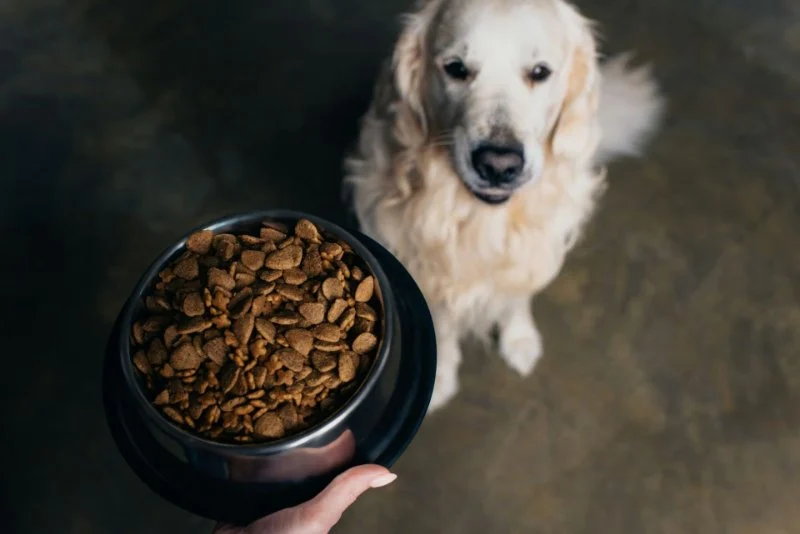
- Understanding the Importance of Dog Food Ingredients
- Key Ingredients to Look for in Dog Food
- Ingredients to Avoid in Dog Food
- How to Choose the Right Dog Food for Your Pet
- Tips for Transitioning to a New Dog Food
Understanding the Importance of Dog Food Ingredients
Choosing the right food for your dog can be a daunting task, but understanding the ingredients in your pet's food is key to making an informed decision. A dog's diet plays a crucial role in its overall health, energy, and longevity. With so many options available, it's essential to know which ingredients promote optimal health and which ones might do more harm than good.

Harrodsburg Animal Hospital
HarrodsburgMercer CountyKentucky
1079 Beaumont Ave, Harrodsburg, KY 40330, USA
Key Ingredients to Look for in Dog Food
When selecting a dog food, it's important to focus on high-quality ingredients that support your dog’s health. Here are some key ingredients to look for:

Vetco Vaccination Clinic
LouisvilleJefferson CountyKentucky
1963 S Hurstbourne Pkwy, Louisville, KY 40220, USA
1. Animal-Based Proteins
Proteins are the building blocks for muscle development, immune function, and overall well-being. Look for animal-based proteins like chicken, beef, lamb, or fish. These protein sources are more digestible for dogs and provide all the essential amino acids they need.
2. Healthy Fats
Fats are an essential energy source for dogs. Look for healthy fat sources like fish oil, chicken fat, or flaxseed. Omega-3 and omega-6 fatty acids are vital for maintaining healthy skin, a shiny coat, and reducing inflammation.
3. Whole Grains and Vegetables
Whole grains like brown rice, oats, and barley are excellent sources of fiber and help support digestive health. Vegetables like sweet potatoes, carrots, and peas provide essential vitamins and minerals to support overall health and vitality.
4. Probiotics
Probiotics are beneficial bacteria that help maintain a healthy gut. Look for dog foods that contain live probiotics, which can support your dog's digestive system and immune health.
Ingredients to Avoid in Dog Food
While many dog foods have beneficial ingredients, some contain fillers and additives that can be harmful. Here are a few ingredients you should avoid:
1. Artificial Colors and Flavors
Artificial colors and flavors are often added to make food look more appealing to pet owners, but they offer no nutritional value and can sometimes cause allergies or gastrointestinal issues in dogs.
2. By-products
By-products such as chicken by-product meal or meat by-products are lower-quality ingredients that may contain parts of the animal that are not fit for human consumption, such as feathers, beaks, or intestines.
3. Corn and Wheat
Many commercial dog foods use corn and wheat as fillers. While these ingredients provide carbohydrates, they are often difficult for dogs to digest and may lead to allergies or sensitivities.
4. Too Many Fillers
Excessive amounts of grains, potatoes, or other fillers can lead to your dog eating a low-protein diet, which may affect their health and energy levels. Look for dog foods that list high-quality animal proteins as the first ingredient.
How to Choose the Right Dog Food for Your Pet
Choosing the best food for your dog depends on several factors, including age, breed, size, and health conditions. Here are a few tips to help you make the right choice:
1. Consider Your Dog's Life Stage
Puppies, adult dogs, and senior dogs have different nutritional needs. Choose food that is specifically formulated for your dog’s life stage to ensure they are getting the right balance of nutrients.
2. Take Your Dog's Activity Level into Account
Active dogs, like working dogs or those that exercise regularly, may need more calories and protein. In contrast, less active dogs may require fewer calories to avoid weight gain.
3. Look for Food That Supports Your Dog's Health Needs
If your dog has specific health issues such as food allergies, joint problems, or obesity, look for formulas designed to address these concerns. Consult with your veterinarian to determine the best food for your dog’s specific needs.
Tips for Transitioning to a New Dog Food
Switching your dog's food can sometimes cause digestive upset, so it’s important to transition slowly to minimize any issues. Follow these tips:
1. Gradual Transition
Start by mixing a small amount of the new food with your dog's current food, gradually increasing the amount of new food over the course of 7-10 days.
2. Monitor Your Dog's Health
Pay attention to any signs of digestive upset, such as vomiting, diarrhea, or changes in appetite. If problems persist, consult with your veterinarian.
3. Stick with High-Quality Food
Always choose high-quality dog food with the right balance of protein, fats, and carbohydrates. Consider food from reputable brands that prioritize natural ingredients.
By understanding what to look for and what to avoid, you can make an informed decision when choosing the right food for your dog. For more information on selecting the best food and to explore a variety of dog food options, visit Pet & Puppy for helpful recommendations and the best deals on top-quality products.







 Tates Creek Animal Hospital4.0 (201 reviews)
Tates Creek Animal Hospital4.0 (201 reviews) Park Hills Animal Hospital4.0 (84 reviews)
Park Hills Animal Hospital4.0 (84 reviews) Animal Medical Center of Surprise4.0 (1606 reviews)
Animal Medical Center of Surprise4.0 (1606 reviews) Avatar Holistic Veterinary Services4.0 (8 reviews)
Avatar Holistic Veterinary Services4.0 (8 reviews) Banfield Pet Hospital4.0 (231 reviews)
Banfield Pet Hospital4.0 (231 reviews) Towne Square Animal Hospital4.0 (283 reviews)
Towne Square Animal Hospital4.0 (283 reviews) How to Discourage Counter-Surfing in Dogs: Tips and Techniques
How to Discourage Counter-Surfing in Dogs: Tips and Techniques The Best Superfoods for Pets: Safe Options & Benefits
The Best Superfoods for Pets: Safe Options & Benefits Understanding Pet Insurance: What Is and Isn’t Covered
Understanding Pet Insurance: What Is and Isn’t Covered How to Pet-Proof Your Home: Safety Tips for Every Room
How to Pet-Proof Your Home: Safety Tips for Every Room Transitioning Pets to a New Brand: Timelines & Guidelines
Transitioning Pets to a New Brand: Timelines & Guidelines How Pet Startups Are Disrupting Traditional Vet Care
How Pet Startups Are Disrupting Traditional Vet Care